This content has been archived. It may no longer be relevant
Reverse lung packing is an advanced lung and diaphragm exercise for freedivers. It helps increase ribcage and diaphragm flexibility and get freedivers bodies used to the effects of extreme pressure at depth. Find out how to do it and what precautions you should take.
What is reverse lung packing and why is it useful?
Reverse lung packing is an exercise to help the body get used to the extreme pressures at depth. In water, pressure increases dramatically. By ten metres of depth, the pressure that is experienced by the body at the surface has doubled and the volume of the lungs has halved (Boyle’s law).
By 30m of depth the pressure has reached 4 bar and the lung volume is a quarter of the volume at the surface. This is usually the depth at which freedivers reach ‘residual volume’ the point where they cannot bring more air up from their lungs to equalise unless they learn advanced equalisation techniques.
If freedivers push their body beyond what it is capable of, or learn advanced equalisation techniques and suddenly get depth before they have rib cage and diaphragm flexibility then they are at an increased risk of lung baratrauma, which can, in extreme cases lead to death.
Reverse lung packing is an exercise where negative pressure is created in the lungs, forcibly removing more air than could normally be exhaled. This simulates the effects of depth, with the ribcage moving inwards and the diaphragm moving up into the chest cavity.
It should be stated that reverse lung packing is an advanced exercise and one that should always be learnt under the guidance of an experienced instructor. Even though these exercises are practiced dry, you should never try them unless you are with someone who can monitor their effects on you.
What precautions should I take when reverse lung packing?
Reverse lung packing is an extreme exercise so should always be started gently and carefully. It is best to learn with an instructor so they can make sure you are doing it correctly and provide feedback and safety guidelines. If in doubt, talk to your doctor first about whether it would be suitable for you to try.
1) Always practice on an empty stomach
Reverse lung packing should be done on an empty stomach, bladder and bowel. It is best done in the morning after you have been to the toilet and before breakfast to make sure there is nothing in your stomach and very little left in your intestines. It is a very strong exercise that moves the organs in the abdominal cavity and should never be practiced after food
2) Sit down and lean forwards slightly
Reverse lung packing can make you extremely dizzy and so should not be done whilst standing up in case you faint. If you lean forwards slightly when you do it then you make the exercise slightly easier and reduce the risk of injury.
3) Take it gently
The longest journey starts with a single step and you cannot expect immediate results. To prevent injury, take the exercise slowly and gently. Always stop if you feel uncomfortable.
4) Always have someone else present, preferably an instructor
As you are learning, and until you completely sure you are doing it correctly and the body is adapting safely, always have someone present, preferably an instructor.
5) Do not do reverse lung packing if you have any history of lung, chest, diaphragm or breathing problems
If you have CPD, a history of collapsed lung, asthma, hernia, or ANY other breathing, lung, chest or diaphragm issue then do NOT practice this exercise. If you are learning to freedive then have a full diving medical and speak to your doctor about the safety of doing this. Always err on the side of caution.
How to do reverse lung packing for freediving step-by-step
Step 1 – Full exhale
After relaxed, gentle, tidal volume breathing, take a quick, deep breath in and then fully exhale. Squeeze the tummy muscles in to expel as much air as you possibly can
Step 2 – Drawing air into the mouth
Close your mouth and pinch your nose closed. Raise your chin up, and, using the the diaphragm, try to push air from the lungs up into the mouth. One student described this as ‘trying to vomit up air’ into the mouth
Step 3 – Expelling air from the mouth
Shut off the epiglottis (to experience this, imagine lifting a heavy weight, or make a continuous ‘ahh’ sound through the mouth and then stop the sound). Then bring the chin down towards the chest and squeeze the cheeks to spit the air out of the mouth
Step 4 – Repeat then hold
Repeat step 2 and 3 until you cannot remove any more air or feel uncomfortable or light headed.
Step 5 – Release
Let go of the nose and allow the breath to come back into the body. You can audibly hear Chris in the video breathing back in and hear his reaction of ‘wow’!
How do I know if I am doing reverse lung packing correctly?
You will know that you are doing reverse lung packing correctly if:
1) When you stop the exercise there is a sudden rush of air back in
2) The diaphragm starts to rise up
Learn how to do reverse lung packing on our advanced freediving course
Reverse Lung packing for freediving should always be learnt under the guidance of an experienced instructor and this article is just an overview of the technique. Come on our RAID Advanced Freediver course and learn how to do it safely from the best!
Want to read more training and technique articles like this one?
Then keep in touch by subscribing to our mailing list for weekly newsletters with exclusive articles, news, films, offers and more!


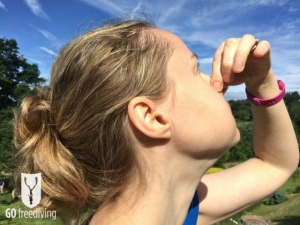
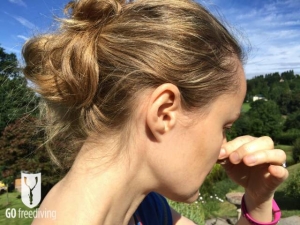
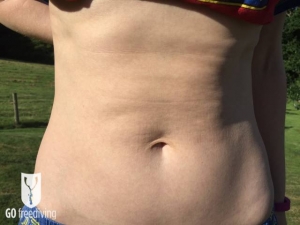


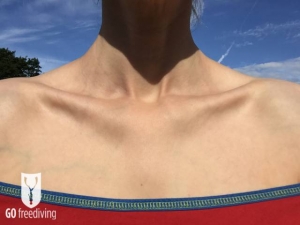


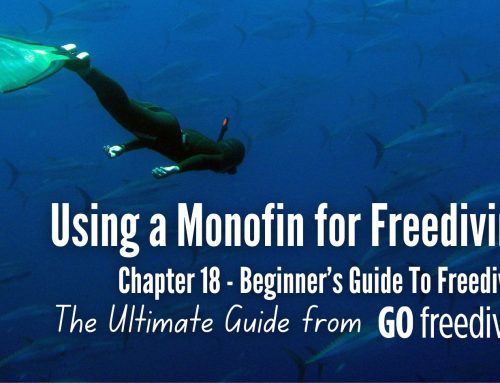


Leave A Comment